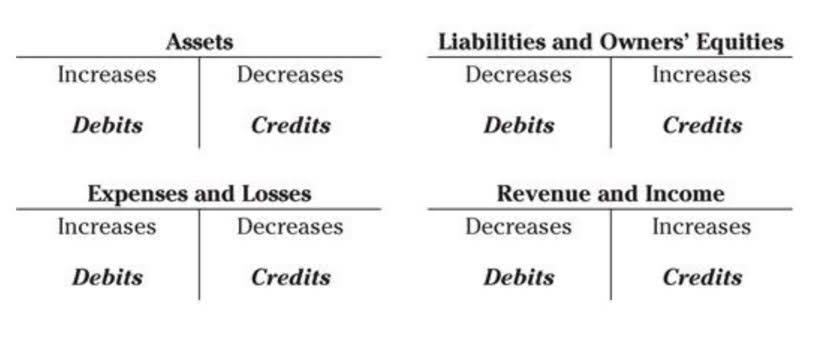Fixed Asset Accounting: Key Components and Best Practices

Lending institutions and creditors would like to see that an organization is using the money they borrowed effectively and has the ability to repay debts. Investors would like to see the money they invested is being used to generate sufficient cash to receive a return on their investment. This ratio could also be helpful internally for budgeting and investment strategy. Always consider the correct procurement costs, depreciation rate, and any potential damages to the asset that might make it lose its value. In case of a partial loss of $10,000, you’d get only $7,500 instead of the total amount of the loss, which is why it’s crucial to ensure that you’re paying the correct amount. Some software can even remind you when the assets are due for maintenance, thus ensuring that your team doesn’t use the tool but lets it get checked out by a specialist.

Reporting Gains and Losses
- Net fixed assets are the metric measuring the value of an entity’s fixed assets.
- As mentioned above, companies aren’t supposed to convert capital assets into cash in under a year.
- Finally, disposal involves the removal or sale of the asset when it is no longer economically viable or useful to the organization.
- To streamline these processes, businesses can explore automation solutions like Accruer Software offered by FinOptimal.
- Accumulated depreciation tracks the total depreciation charged on an asset, aiding in determining its carrying value and providing insights into the asset’s current worth.
- Therefore, it is crucial to have a comprehensive understanding of the procurement process.
- A company’s balance sheet statement includes its assets, liabilities, and shareholder equity.
This includes selecting eco-friendly assets, optimizing energy efficiency, reducing waste generation, and responsibly disposing of assets at the end of their useful life. By prioritizing sustainability, companies can https://www.bookstime.com/articles/what-is-a-w9 reduce their environmental footprint, enhance brand reputation, and comply with regulatory requirements. In contrast, corrective maintenance involves addressing issues and failures as they occur, often in response to equipment breakdowns or malfunctions.
Financial statement treatment of fixed assets

Any purchase above this amount is treated as a fixed asset and depreciated over its useful life. A laptop costing $1,200 would be capitalized and depreciated, while a $50 calculator would be expensed. Establishing a clear capitalization policy ensures consistency and comparability in your financial reporting. Strategic planning and budgeting for asset acquisition, coupled with effective asset utilization and maintenance strategies, optimize resource allocation and enhance operational efficiency. Periodic revaluation and estimation of residual value reflect the true economic value of assets, contributing to accurate financial reporting. Integrating green practices promotes environmental sustainability, while adherence to local fixed asset accounting process and international accounting standards ensures consistency and comparability in financial statements.

Can the salvage value of a fixed asset change over time?
Real-time tracking and performance monitoring are essential for understanding the current state of your assets. The ability to monitor assets across multiple locations, improve efficiency, extend an asset’s lifespan, and reduce maintenance costs offers tremendous value. A income statement good system should also offer robust asset tagging options, such as barcodes, QR codes, RFID, or GPS, along with centralized registers for easy access to key information. Lifecycle management tracking, from acquisition to disposal, helps you understand the complete history of each asset. Finally, consider how the software helps maximize the investment value of your assets.
- Vehicles, boats and aircraft placed into service for operations with benefits extending beyond one year from date of acquisition.
- Resident government-controlled corporations and quasi-corporations engaged in the production of market goods and/or non-financial services.
- Depreciation is the practice of accounting for an asset’s decrease in value as it is used.
- An asset may be transferred from a construction-in-progress account to a completed fixed asset account when fully constructed.
- However, over-reliance on corrective maintenance can lead to increased downtime, higher repair costs, and reduced asset reliability.
- Having fixed assets can add a layer of complexity when calculating your business’s value, but they effectively strengthen your operation’s revenue potential.
- Estimating residual value requires consideration of factors such as the asset’s condition, market demand, technological obsolescence, and potential salvage value.
- Regardless, an impairment should be recorded once a triggering event becomes known, not at the time of routine impairment testing.
- We provide customers with the ultimate single vendor solution that includes cloud-based software, top-rated smartphone scanner apps and patented QR code tags.
- Develop comprehensive asset management policies that outline procedures for acquiring, managing, and disposing of fixed assets.
At the portfolio level, the fund could target positive financial returns over a defined time horizon, but individual investment return targets could be below-market or negative, depending on the investment’s strategic value. Losing money on strategic investments should be expected, and both the U.S. government and the fund’s leadership should be comfortable with a defined financial-risk-for-impact tradeoff. According to William & Mary’s AidData research lab, total outstanding cross-border credit from China to low-income, middle-income, and high-income countries is worth at least $2.6 trillion. Patents, copyrights, mineral concessions, and similar non-physical non-financial assets.
Federal Funding for Schools: Learn how to ensure compliance with federal regulations
- For instance, a construction company could face substantial damage to its outdoor machinery and equipment resulting from a natural disaster.
- An upward revaluation increases the asset’s book value and, consequently, the equity of the organization.
- This technology not only improves the accuracy of physical inventories but also provides valuable data on asset usage and maintenance needs.
- Inexhaustible collection or items are items whose economic benefit or service potential is used up so slowly that the estimated useful lives are extraordinarily long.
- The asset in this stage should be depreciated entirely, and its value should be zero.
- This situation often arises due to changes in market conditions, technological advancements, or physical damage.
That is, you need to be aware of the period during which you will be able to use the equipment for its original purpose. Be precise when writing down the amount it costs you to purchase the asset and choosing the correct depreciation method for your equipment to ensure that you get the most out of them. The main difference between the two is that you use your fixed assets to generate income over time, and you’re not interested in getting rid of them since you bought them to profit off their usage. Decrease the fixed asset account by $20,000 to remove the van from the company’s records.

Deixe uma resposta
Want to join the discussion?Feel free to contribute!